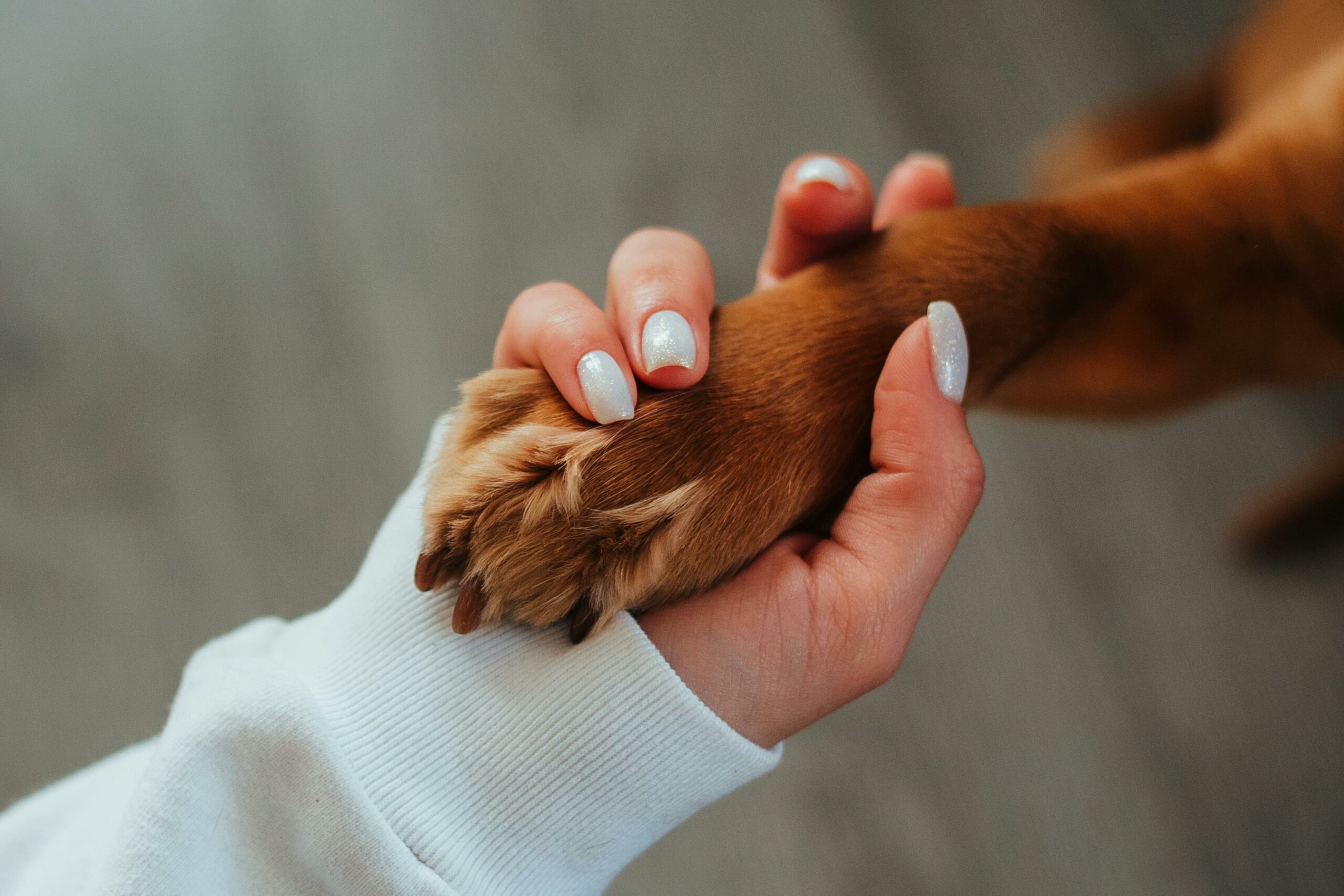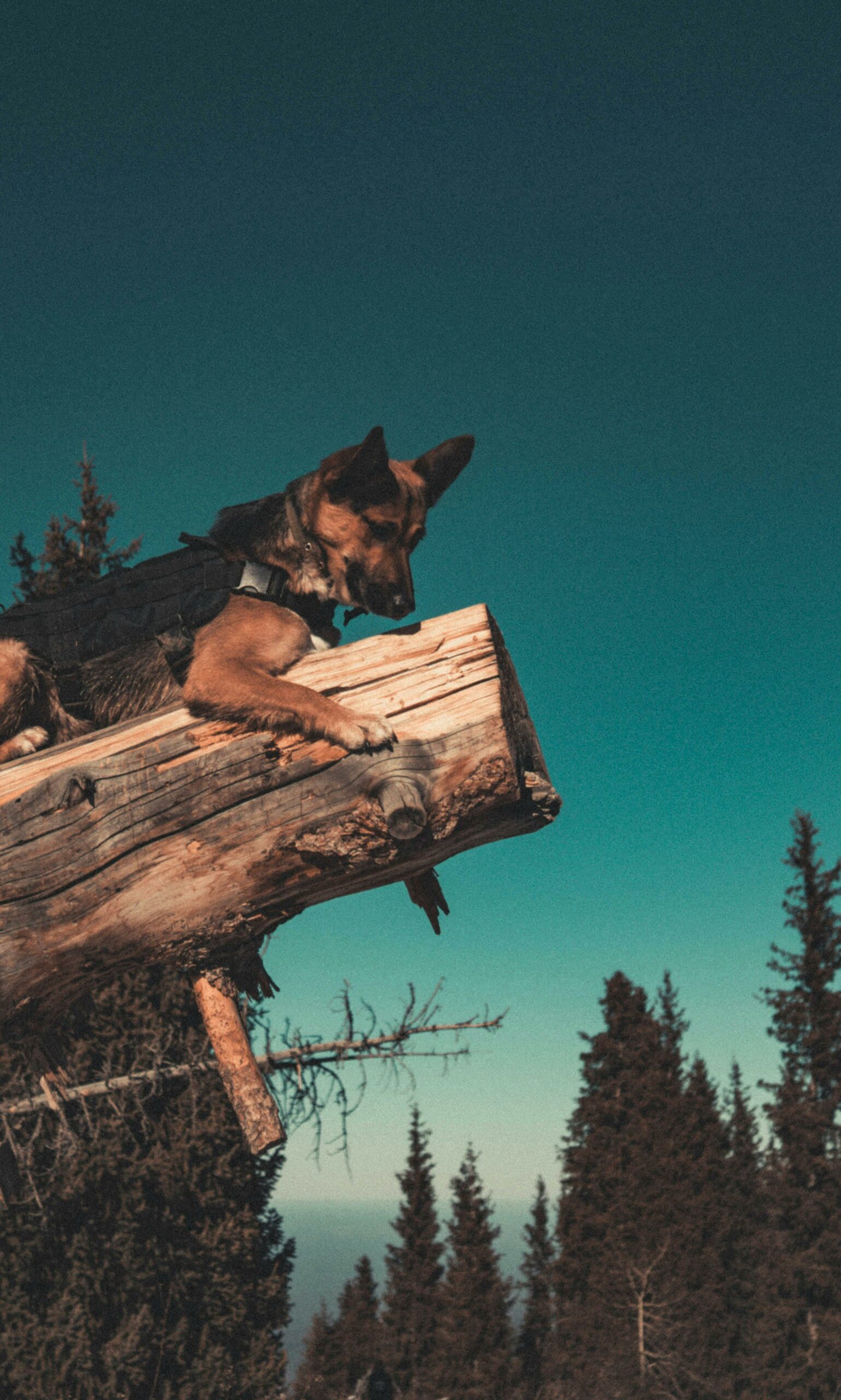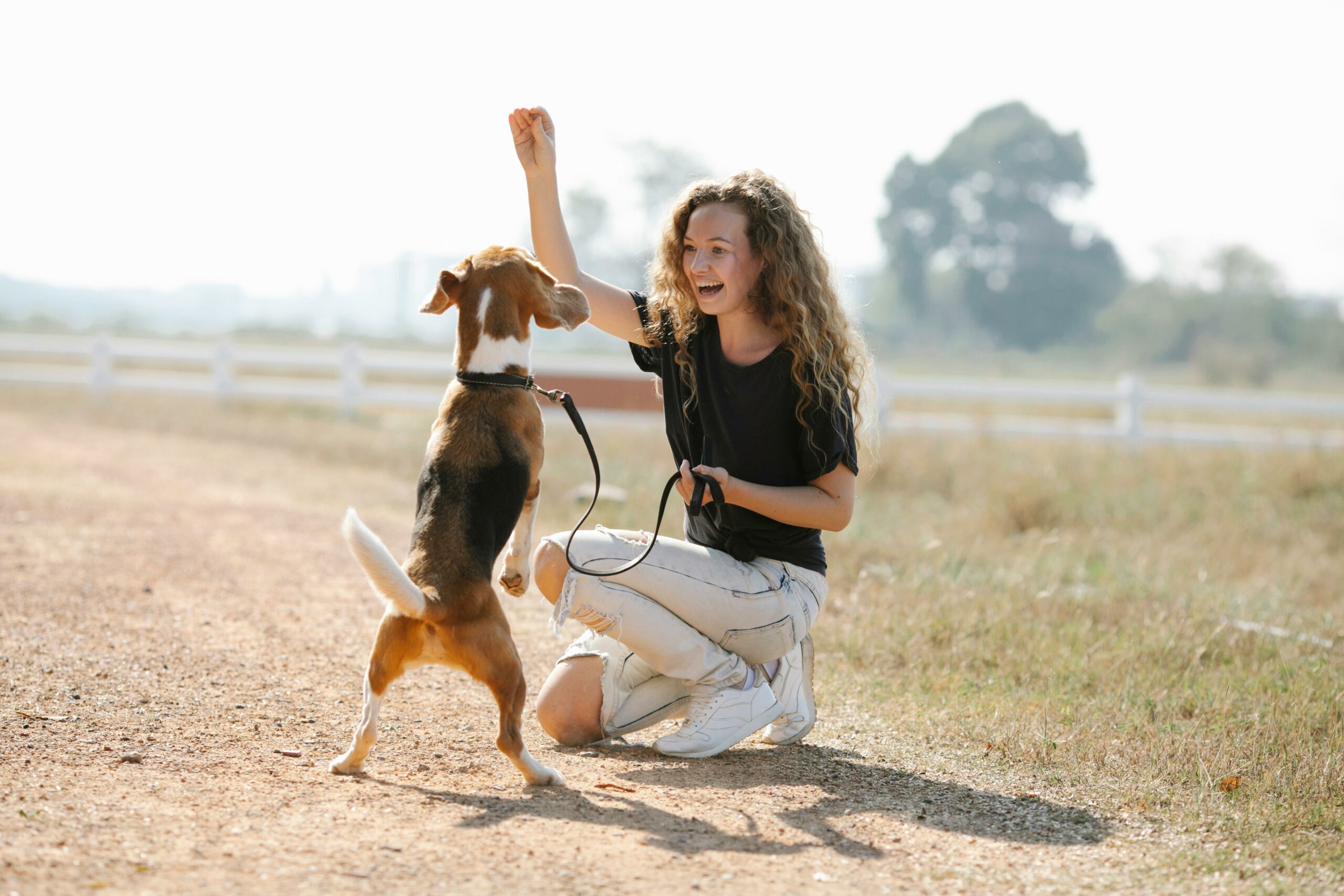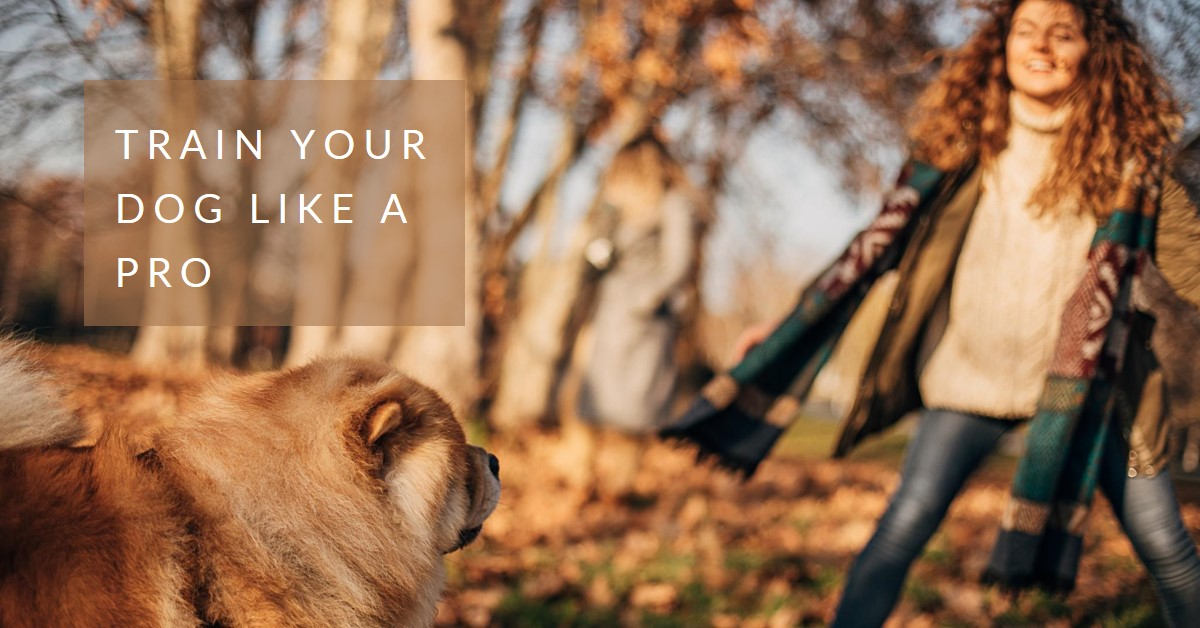Teaching a dog a trick can take anywhere from a few minutes to several weeks. Consistency and positive reinforcement are key factors in training success.
Introducing new tricks to your furry friend can be a fun and rewarding experience. The time it takes to teach a dog a trick varies depending on the complexity of the trick, the dog’s breed, age, and temperament. Simple tricks like sit or shake can be learned in a matter of minutes with the right approach, while more advanced tricks may require weeks of consistent training sessions.
By using rewards, praise, and patience, you can effectively teach your dog new tricks and strengthen your bond in the process. Remember, every dog learns at their pace, so enjoy the process and celebrate each small victory along the way.
What Is Canine Learning
Dogs are intelligent and social creatures that can learn a wide range of skills and behaviours. However, teaching a dog a new trick requires patience, consistency, and a basic understanding of canine learning. In this post, we’ll explore the basics of dog training and answer the common journeyion: How long does it take to teach a dog a trick?
The Bond Between Dogs And Humans

Dogs have been living and working alongside humans for thousands of years. They are loyal, affectionate, and have an incredible ability to read human emotions and body language. This bond between dogs and humans is the foundation of successful dog training. Dogs want to please their owners and feel a sense of accomplishment when they learn something new.
Basics Of Dog Training

When it comes to teaching a dog a new trick, there are several basic principles of dog training that you should keep in mind:
- Positive reinforcement: This involves rewarding your dog for good behaviour, such as treats, praise, or playtime.
- Consistency: Dogs learn best through consistent training and repetition.
- Timing: It’s important to reward your dog immediately after they perform the desired behaviour, so they associate the behaviour with the reward.
- Patience: Learning a new trick takes time, and it’s important to be patient and avoid getting frustrated with your dog.
By following these principles, you can create a positive and effective learning environment for your dog.
Factors Affecting Training Duration
Breed And Intelligence

The breed of a dog plays a crucial role in determining how long it takes to teach them a new trick. Highly intelligent breeds such as Border Collies and Poodles may grasp new commands quickly, while less intelligent breeds may require more time and patience. Understanding your dog’s breed characteristics can help in setting realistic expectations for training duration.
Age And Trainability
The age of a dog can significantly impact their trainability. Puppies are generally more receptive to learning new tricks, as their brains are still developing, and they are eager to please. On the other hand, older dogs may take longer to learn new commands due to potential physical limitations or established habits. Tailoring the training approach to suit the age of the dog can help expedite the learning process.
Previous Training Experiences
A dog’s previous training experiences can influence how long it takes to teach them a new trick. Dogs that have undergone obedience training or have learned previous tricks may pick up new commands more quickly due to their familiarity with the training process. Conversely, dogs with negative training experiences may require additional time to build trust and confidence. Understanding a dog’s training history is essential in devising an effective training plan.
Choosing The Right Trick
When it comes to teaching your dog a new trick, choosing the right one is essential. The trick you select should align with your dog’s abilities, interests, and personality. Let’s explore the factors to consider when choosing the perfect trick for your furry friend.
Simple Vs Complex Tricks
When deciding on a trick to teach your dog, consider the complexity of the skill. Simple tricks, such as sit, stay, or shake, are ideal for beginners. These tricks are easier for dogs to grasp and can build a foundation for more advanced skills. On the other hand, complex tricks like playing dead or weaving through legs require more time and patience to teach. Consider your dog’s learning pace and start with simpler tricks before progressing to more challenging ones.
Assessing Your Dog’s Abilities
It is crucial to assess your dog’s abilities before choosing a trick to teach. Observe your dog’s behaviour and existing skills to gauge their learning potential. Consider their attention span, physical capabilities, and eagerness to learn. By understanding your dog’s strengths and limitations, you can select a trick that suits them best and enhances their learning experience.
Training Essentials
Training your dog to learn new tricks can be an enjoyable and rewarding experience for both you and your furry friend. However, it’s essential to understand the training essentials that play a crucial role in the process. By mastering positive reinforcement techniques and maintaining consistency in training sessions, you can effectively teach your dog various impressive tricks.
Positive Reinforcement Techniques
Positive reinforcement is a powerful tool in dog training, as it focuses on rewarding desired behaviours rather than punishing unwanted ones. When teaching a new trick, use treats, praise, and affection to reinforce the behaviour you want your dog to learn. By associating the trick with a positive experience, your dog will be more motivated to repeat the behaviour.
Consistency In Training Sessions
Consistency is key when teaching your dog a new trick. Regular, short training sessions are more effective than sporadic, lengthy ones. By sticking to a consistent schedule and providing clear cues, your dog will be able to understand and internalize the desired behaviour more quickly.
Setting Realistic Goals
Setting realistic goals is crucial when teaching your dog a new trick. Understanding the time it takes to teach a dog a trick can help you set achievable objectives and stay motivated throughout the training process.
Short-term Vs Long-term Objectives
When setting goals for teaching your dog a new trick, it’s important to differentiate between short-term and long-term objectives. Short-term goals can include simple actions or behaviours that lead to the final trick, such as getting your dog to pay attention to a specific command or movement. Long-term objectives involve mastering the full trick itself, which may take more time and practice.
Celebrating Small Successes
Celebrating small successes during the training process is essential for maintaining motivation and reinforcing positive behaviour. When your dog successfully performs a small part of the trick, such as following a hand signal or responding to a verbal cue, be sure to praise and reward them. This positive reinforcement encourages your dog to continue learning and progressing towards the overall trick.
Common Training Challenges
Dealing With Distractions
Dogs can easily get distracted, especially when learning a new trick. To address this, create a calm and quiet environment for training. Limit external noises and keep the training area free from distractions. Use treats to grab your dog’s attention and praise them when they focus on the task at hand.
Overcoming Stubborn Behaviour
Sometimes, dogs can exhibit stubborn behaviour during training. Be patient and consistent in your approach. Use positive reinforcement to encourage the desired behaviour. Break down the trick into smaller, manageable steps, and celebrate each small success. If your dog is particularly stubborn, consider seeking professional training assistance to address the issue effectively.
Monitoring Progress
Monitoring progress is an essential part of teaching a dog a new trick. It helps you track the development of your dog’s skills and identify areas that need improvement. By keeping a close eye on your dog’s progress, you can make necessary adjustments to your training methods and ensure that the learning process is effective and enjoyable for your furry friend.
Keeping A Training Log

One effective way to monitor your dog’s progress is by keeping a training log. This log can include details such as the date and time of each training session, the specific trick being taught, the duration of the training, and any notable observations about your dog’s performance. By maintaining a training log, you can track the frequency of training sessions and identify patterns in your dog’s learning process.
Adjusting Strategies When Needed
It’s important to be flexible in your training approach and adjust your strategies as needed. If you notice that your dog is struggling to grasp a particular trick, try modifying your teaching methods or breaking down the trick into smaller, more manageable steps. Pay attention to your dog’s body language and behaviour during training sessions, and be prepared to adapt your approach to suit your dog’s individual learning style.
Advanced Training Techniques
Find effective advanced training techniques to shorten the time it takes to teach your dog new tricks. With consistent practice and positive reinforcement, you can see significant progress in your dog’s learning abilities in a shorter period. Adapt your training methods to suit your dog’s individual needs for optimal results.
Teaching a dog a trick requires patience, consistency, and a profound understanding of their psychology. While simple commands like “sit” or “stay” can be taught in just a few weeks, advanced training techniques can take months to master. In this section, we will discuss two popular techniques that can help you teach your dog complex behaviours: clicker training and shaping and chaining.
Clicker Training For Precision
Clicker training is a popular positive reinforcement technique that involves using a clicker to mark the exact moment your dog performs the desired behaviour. This technique is ideal for teaching precision behaviours, such as jumping through a hoop or weaving through poles. Here’s how it works:
- Choose a behaviour you want to teach your dog.
- Wait for your dog to perform the behaviour.
- As soon as they do, press the clicker and give them a treat.
- Repeat this process until your dog associates the click with the behaviour.
- Begin to add a verbal cue, such as “jump” or “weave,” while your dog performs the behaviour.
With consistent practice, your dog will begin to associate the verbal cue with the behaviour, and you can gradually phase out the clicker and treats.
Shaping And Chaining Behaviours
Shaping and chaining are two related techniques that involve breaking down complex behaviours into smaller, more manageable parts. Shaping involves rewarding your dog for behaviours that gradually approximate the desired behaviour, while chaining involves linking together a series of behaviours to create a complete sequence.
For example, if you want to teach your dog to roll over, you might start by rewarding them for lying down on their side, then for rolling slightly onto their back, then for rolling all the way over. Once your dog has mastered each step, you can begin to chain them together into a complete roll-over sequence.
These techniques can be time-consuming, but are incredibly effective for teaching complex behaviours. With patience and consistency, your dog can learn a wide range of impressive tricks and behaviours.
In conclusion, advanced training techniques like clicker training and shaping and chaining can help you teach your dog complex behaviours. With consistent practice and patience, your dog can learn an impressive range of tricks that will impress your friends and family.
Health And Wellness Impact
The Role Of Exercise And Diet
Daily exercise and a balanced diet are crucial for your dog’s overall well-being.
Mental Stimulation And Learning
Engaging in mental activities promotes learning and keeps your dog sharp.
When To Seek Professional Help
Teaching your dog tricks can be a fun and rewarding experience, but occasionally you may encounter challenges that require the expertise of a professional trainer.
Identifying The Need For A Trainer
If your dog is struggling to learn a trick after consistent practice and positive reinforcement, it may be time to consider seeking help from a professional trainer.
- Consistent difficulty in grasping the trick
- Showing signs of frustration or disinterest
- Reverting to unwanted behaviours during training
Benefits Of Professional Training Classes
Professional training classes offer a structured environment where your dog can learn new tricks effectively and efficiently.
- Expert guidance and personalized feedback
- Socialization with other dogs
- Consistent reinforcement of positive behaviours
Celebrating Your Dog’s Success
Your dog’s progress in learning tricks is a reason for celebration. Recognising milestones and continued learning and bonding play key roles in this journey.
Recognising Milestones
- Each small victory is significant.
- Applaud with treats and praise.
- Track progress to see growth.
Continued Learning And Bonding
- Engage in regular practice sessions.
- Strengthen your bond through training.
- Explore new tricks for mental stimulation.
Frequently Asked Questions
What Is The Hardest Trick To Teach Your Dog?

The hardest trick to teach your dog is usually complex behaviours like fetching specific items or opening doors.
What Is The Easiest Trick To Teach A Dog?
The easiest trick to teach a dog is “sit. ” Use treats and praise for positive reinforcement. Be patient and consistent.
How Fast Can Puppies Learn Tricks?
Puppies can learn tricks quickly as they have a high capacity to learn. Some puppies can learn tricks in just a few days, while others may take a few weeks or months. Consistency, patience, and positive reinforcement training methods are key to successful learning.
What Age Should You Start Teaching Your Dog Tricks?
You can start teaching your dog tricks at any age, but it’s best to begin when they are young to establish good habits and build a strong bond. Puppies as young as 8 weeks old can start learning basic commands and tricks.
Teaching your dog tricks takes time and patience. Consistent practice and positive reinforcement are key. Remember, every dog is unique, so the time it takes can vary. Enjoy the process and celebrate small victories along the way. Keep training fun and rewarding for a happy, well-trained pup!
